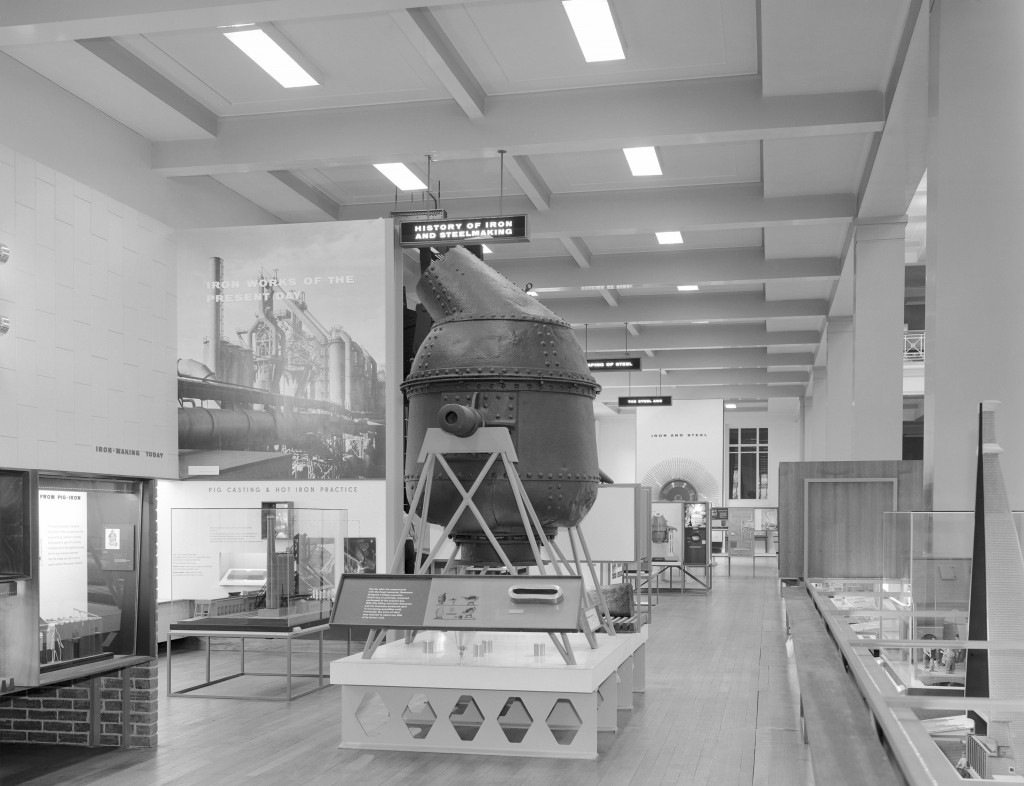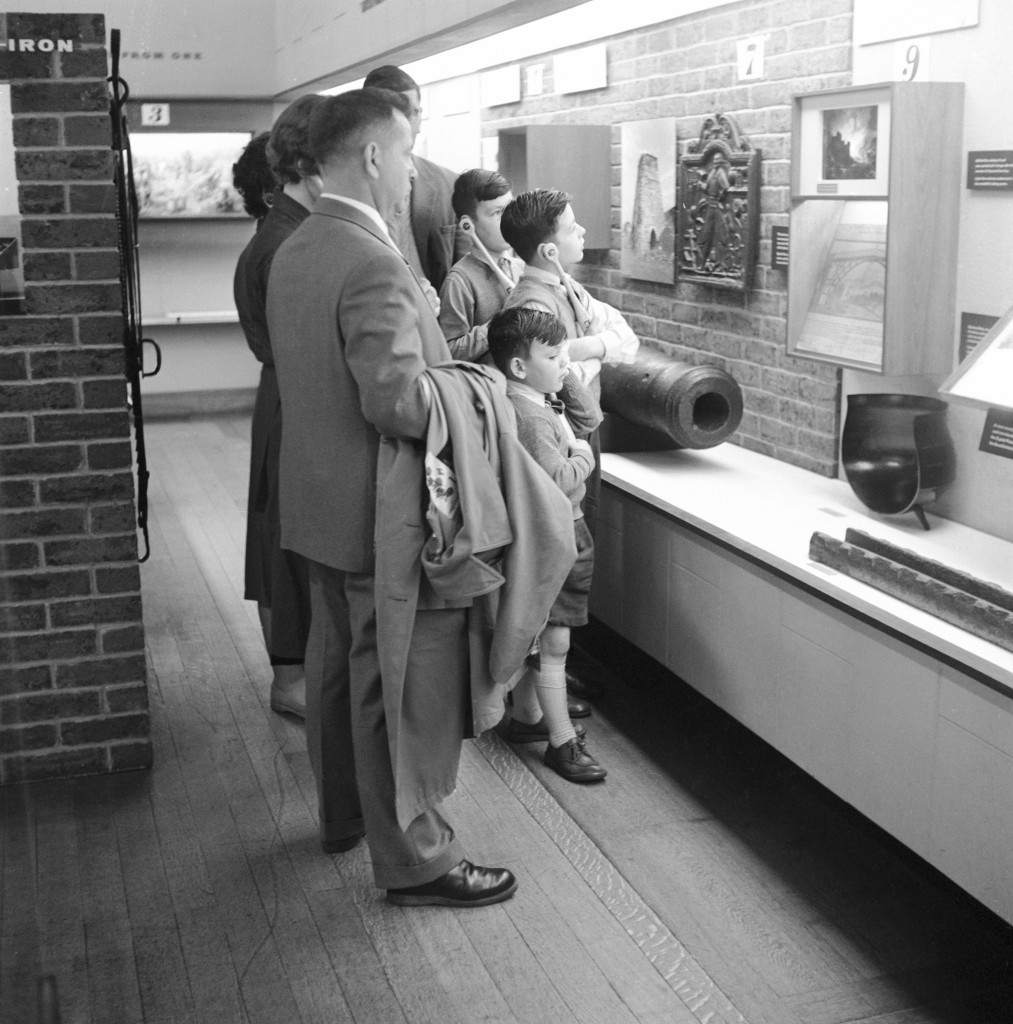In 1960 the thirteenth Duke of Bedford, owner of Woburn Abbey, and the Science Museum went head-to-head in a curious battle. They had decided to experiment with a pioneering new technology known as the radio-guided tour and both were eager to be the first to launch the scheme to visitors.
The pair were neck and neck as scripts were written and new equipment installed. The Museum’s director, David Follett, noted how it would be ‘a feather in our cap’ if his team could beat the Duke. With a team of expert curators, technicians and an in-house workshop on-hand to troubleshoot any technical issues, it was not long before a tour was prepared for the Museum’s Iron and Steel Gallery.
The Duke, distracted by other events, would take another eight months to produce his own tour for the State Apartments at Woburn Abbey. So the Museum won the battle, toasting its success with a special press event.
The start of radio-guided tours at the Museum marked an important point in the history a very familiar feature at museums, galleries and heritage sites: the humble audio guide.

Researching the radio-guided tour
During my PhD at the University of Nottingham, I took an in-depth look at the development of the radio-guided tour at the Museum. In the history of audio guide technology in museums, this technology has been often overlooked. However, I was less interested in technological novelty, instead investigating the role of sound and sound technology in shaping the experience and interest of visitors to the Museum.
One of the things I discovered was a connection between the radio-guided tour and a type of exhibition display, or rather an ‘exhibition landscape’.
It might seem strange to refer to a museum exhibition as a ‘landscape’ as opposed to an exhibition space. Yet during the 1950s and 60s, ‘landscape’ described a new kind of exhibition layout aimed at a growing number of visitors with a general interest in the Museum and its exhibits.
The term ‘landscape’ in exhibition design speak referred to the picturesque in eighteenth century landscape painting. Outside the Museum during the post-war years, a new generation of exhibition designers had revived the picturesque to shape their designs for commercial displays, trade shows and international exhibitions.
Commissioned by the Science Museum, exhibition designer V. Rotter – one of the lead designers at the 1951 Festival of Britain – used the technique of ‘exhibition as landscape’ for the Iron and Steel Gallery. Internally too, the Museum’s curators picked up on the principles of the picturesque.

Its key principles included contrast – in scale, colour and texture – and the elements of concealment and revelation. Each was deployed to engage visitors and evoking emotions such as awe and wonder. Gradually this new approach replaced an older kind of display at the Museum, the taxonomic approach, which had row upon row of glass and mahogany showcases.
During my research, I discovered that it was these newer galleries that were selected to host the radio-guided tour. By studying the written scripts for each tour, I discovered the automated commentaries helped visitors interpret individual exhibits and navigate the exhibition landscape.

So whilst the Science Museum and the Duke of Bedford vying for the accolade of pioneer of the audio guide is an amusing thought, the issue of who won or lost wasn’t the focus of my research. Instead, I set out to question how and why the sound was used in the Museum as a space for learning, and I discovered a key connection between sound and a very particular kind of museum display. What fascinated me about the radio-guided tours was how the technology brought sound and landscape together to help an ever-growing number of museum visitors interested in science and technology.
Where were the radio-guided tours installed?

These tours were installed in the Iron and Steel Gallery, Electric Power, Sailing Ships and Acoustics galleries in the Science Museum.
How did the technology work?
Each tour comprised of a tape player, a radio transmitter and a set of portable radio-receivers. The tapes were fed via a radio transmitter to an induction loop antenna fixed to the ceiling of the exhibition space. The output from each tape – a vocal commentary and occasional accompanying sound – was then picked up by visitors on the ground via hand-held radio receivers. The receivers, also known as ‘lorgnettes’ could be hired from the Museum’s bookstall at a cost of one shilling and a refundable deposit of ten shillings.
What happened to the tours?
In the end, a little like the Duke of Bedford, the Museum became distracted by other pressing matters. The modernisation of exhibitions during the 1950s and 60s put the whole Museum in a constant state of flux and change. The regular reordering of exhibits meant that commentaries quickly became obsolete and re-recording was expensive and time-consuming.
The construction of the new Centre Block, which opened in 1963, also created a lot of unwanted noise making the commentaries often difficult to hear. A host of technical failures didn’t help either, nor the occasional light-fingered listener taking off with a radio receiver! The scheme was abandoned in 1964 just four years after its launch.
Where is the equipment now?
A tape player, magnetic tape and a handful of ‘lorgnette’ radio receivers now reside in the Science Museum’s stores at Blythe House.
Dr. Jennifer Rich is a Cultural Engagement Fellow at the University of Nottingham. She is currently working on a project called ‘Acoustics on Display: Collecting and Curating Sound at the Science Museum’, which explores the history of the acoustics collection at the Science Museum.